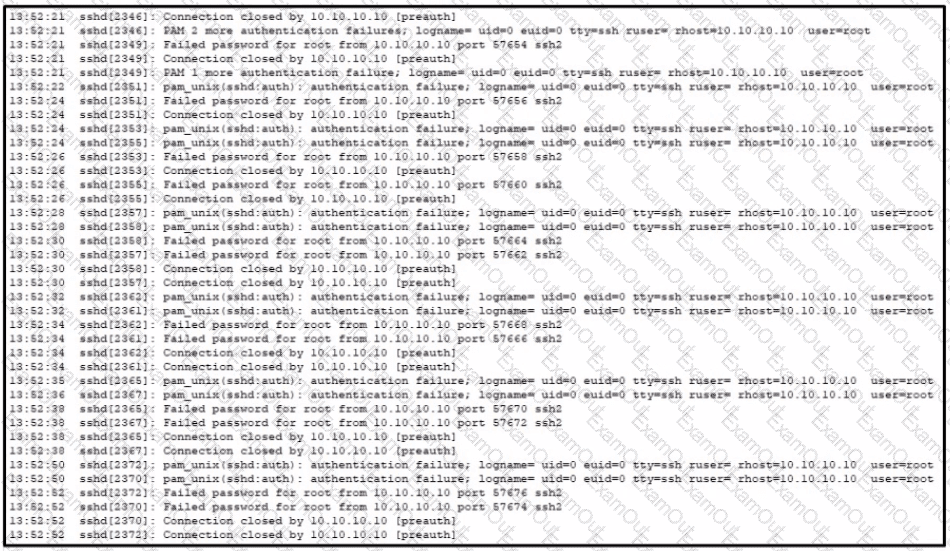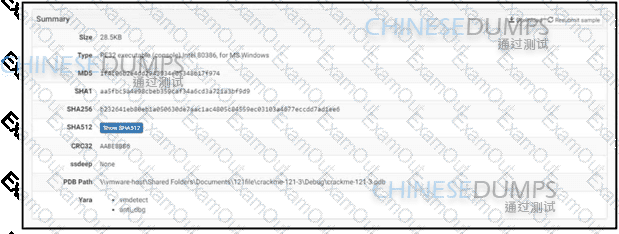What is threat hunting?
How does statistical detection differ from rule-based detection?
What is the difference between deep packet inspection and stateful inspection?
How does an attacker observe network traffic exchanged between two users?

Refer to the exhibit A SOC analyst is examining the Auth.log file logs of one the breached systems What is the possible reason for this event log?
What is a difference between a threat and a risk?
Which are two denial-of-service attacks? (Choose two.)
An employee received an email from a colleague’s address asking for the password for the domain controller. The employee noticed a missing letter within the sender’s address. What does this incident describe?
Refer to the exhibit.

An engineer is reviewing a Cuckoo report of a file. What must the engineer interpret from the report?
Which step in the incident response process researches an attacking host through logs in a SIEM?

